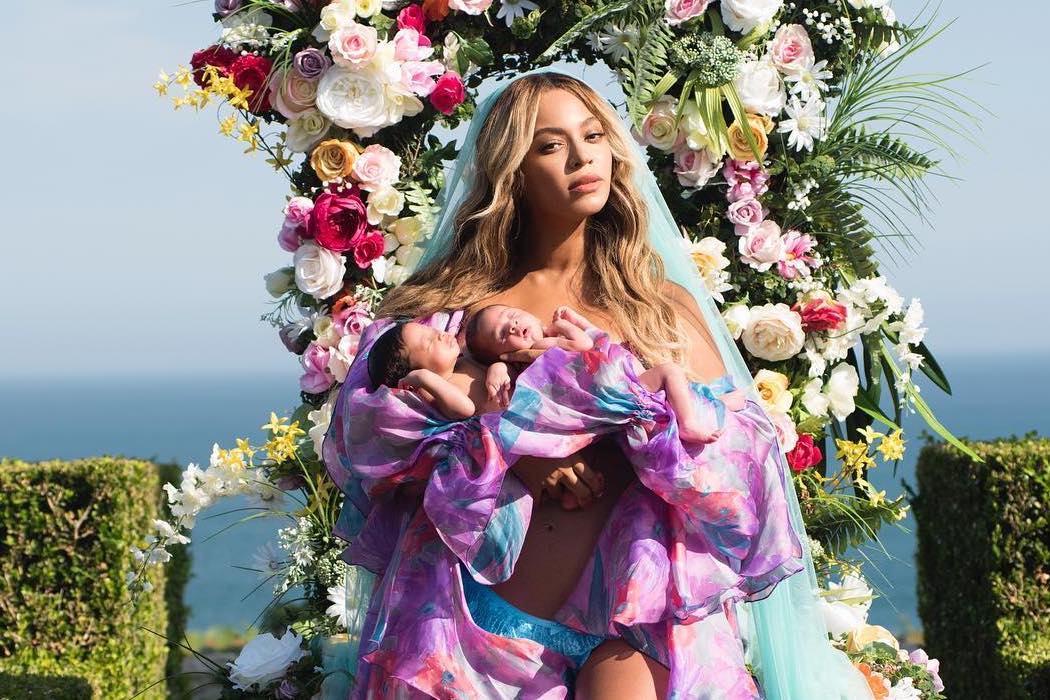Beyoncé and Jay Z announced her pregnancy with now-iconic photographs taken in collaboration with artist Awol Erizku. More recently, she thrilled the Bey hive with birth-announcement photographs composed in the same vein, taken by Mason Poole and posted on Instagram.
Beyoncé and her photographers appear to present her as the Virgin Mary, using recognizable compositions, such as her veiled face and the flower mandorla enveloping her, in both Erizku’s and Poole’s images. The Atlantic’s Spencer Kornhaber wrote, “Beyoncé is continuing in her long dialogue with the high-art world,” noting such varied influences as the Virgin Mary, Our Lady of Guadalupe, Renaissance Madonnas, Dutch flower paintings, and Kehinde Wiley. Part of the power in such imagery, he argues, is that “it’s recent and yet classical.”
Both photos nod to the ways in which women in positions of power have been represented throughout history. Historian Linda B. Hall has analyzed “images of women and power,” exploring how artists have used the image of the Virgin Mary to emphasize power, suffering, dedication, and endurance while also instilling a sense of maternal wonder.
Hall quotes art historian David Freedberg on the power of images to affect “the ways in which human beings and images interact”:
People are sexually aroused by pictures and sculptures; they break pictures and sculptures; they mutilate them, kiss them, cry before them, and go on journeys to them; they are calmed by them, stirred by them, and incited to revolt. They give thanks by means of them, expect to be elevated by them, and are moved to the highest levels of empathy and fear. They have always responded in these ways; they still do.
Hall analyzes the continued relevance and far-reaching reverence for images of the Virgin Mary throughout Spain, Latin America, and the United States. She notes, “In the case of the Virgin Mary, as time passes, the reverence that began centuries ago is constantly renewed and changed by religious leaders, by artists, and through popular reverence.” Historically speaking, Beyoncé’s imagery seems to borrow elements most heavily from those of Our Lady of Guadalupe, whose image first appeared on the cloak, or tilma, of Juan Diego in 1531, after the Virgin Mary’s fourth visit to him. About a century after her image was emblazoned on his cloak, artistic renderings of Our Lady of Guadalupe, complete with the flower mandorla and blue robe of stars, began appearing in print.
Beyoncé is not just a pop culture icon, she is also a master media artist and collaborator, working with poets, directors, designers, artists, and photographers to craft not only her groundbreaking visual albums like Lemonade (2016) and Beyoncé,(2013), but also her more personal pregnancy and birth announcements.
As Kornhaber noted: “art history is littered with images of motherhood and fertility. It makes sense that one of our reigning modern artists—pop artist, but still artist—would contribute to the canon.” Through Beyoncé’s announcements and carefully curated Instagram account, she continues to explore and express her role as an artist, while also asserting herself in creating and controlling her own imagery.







